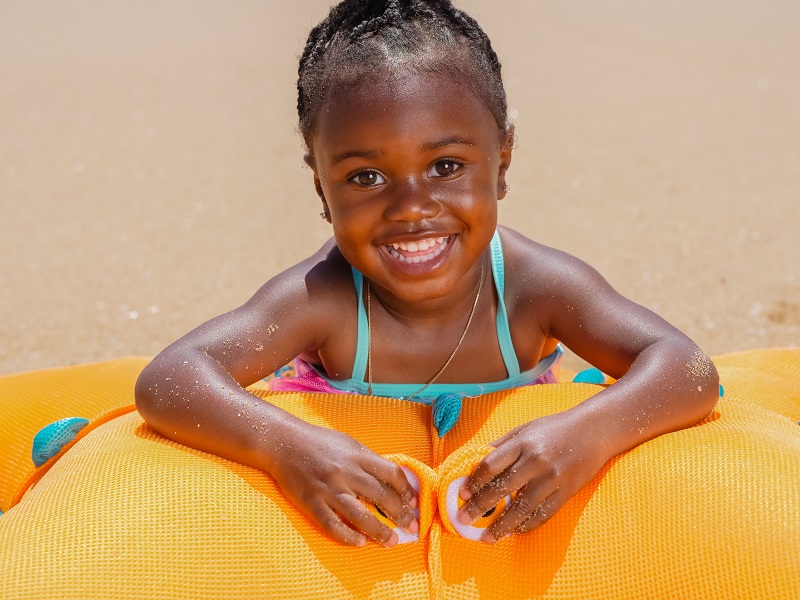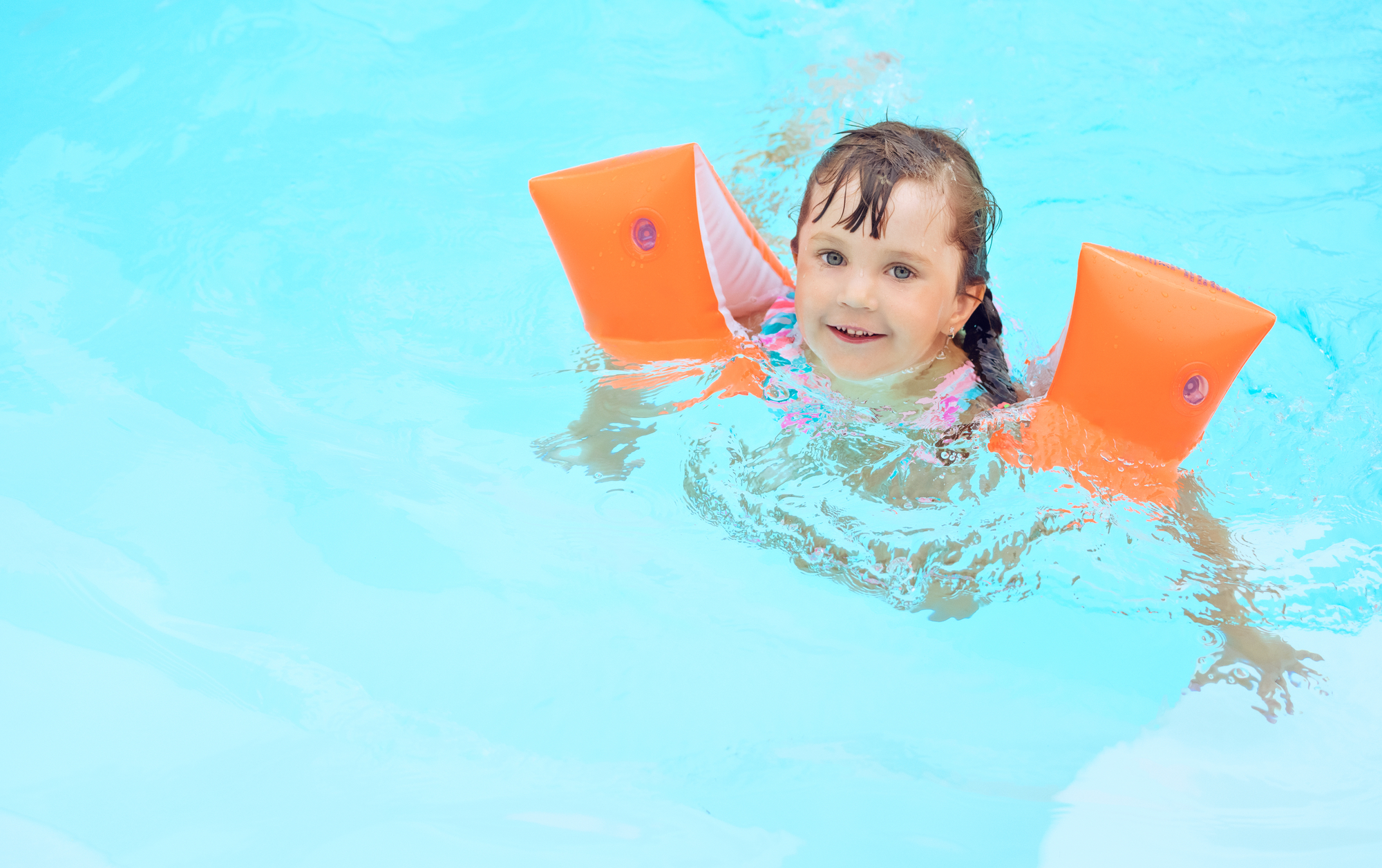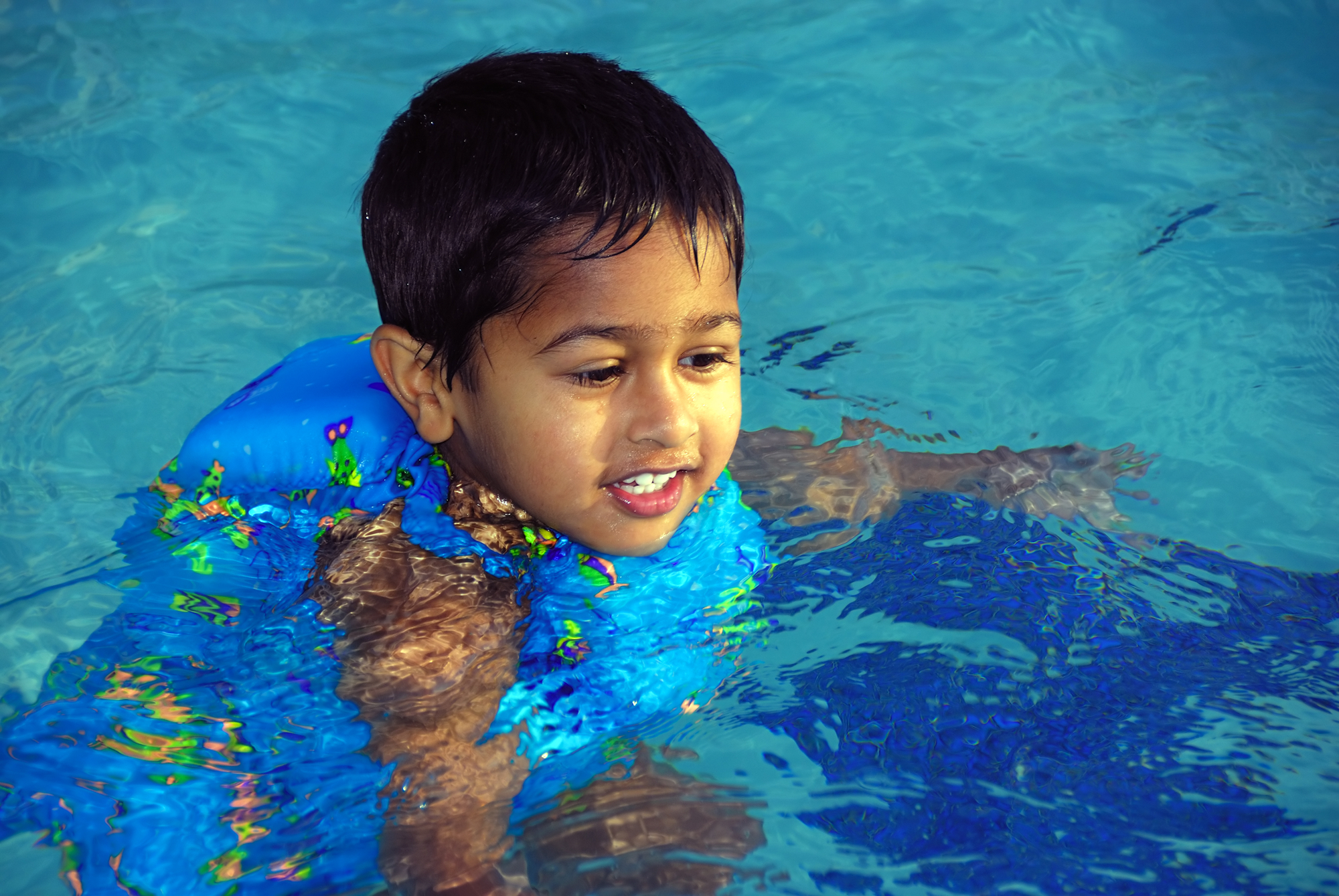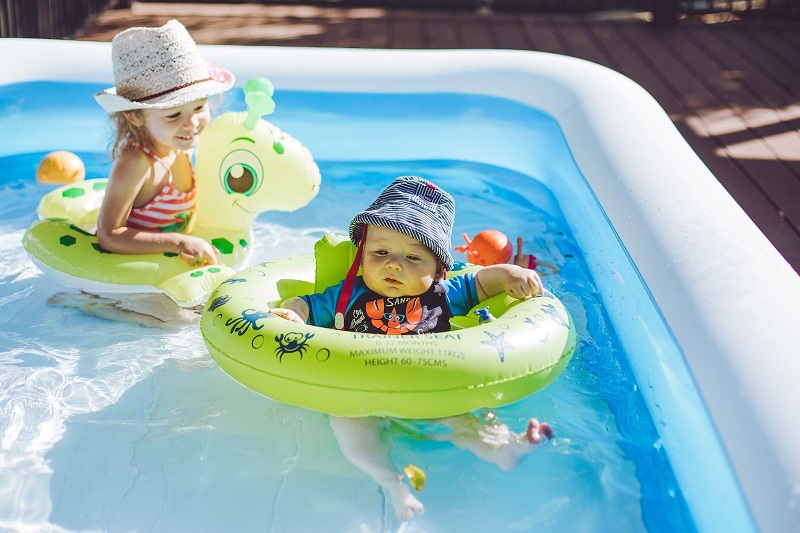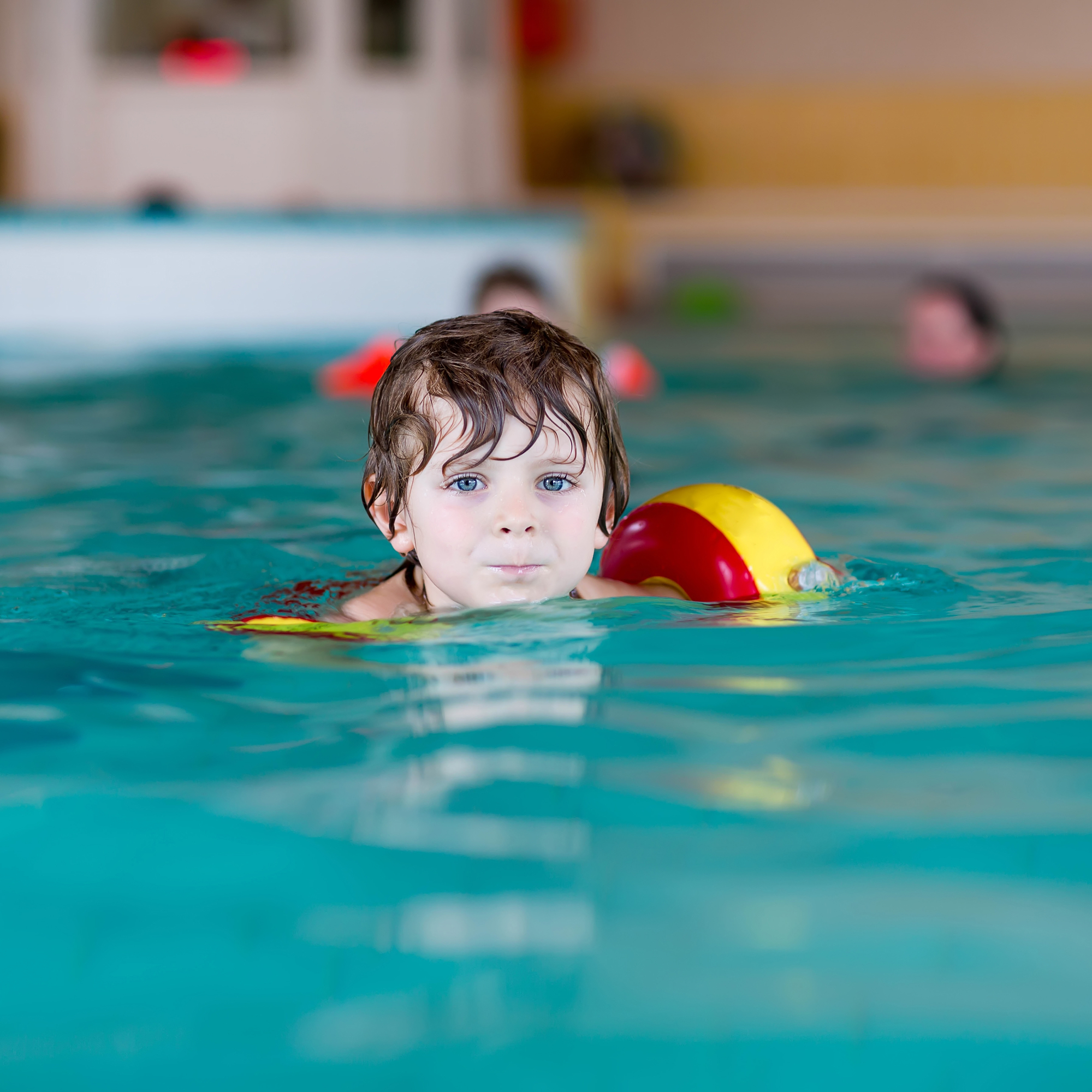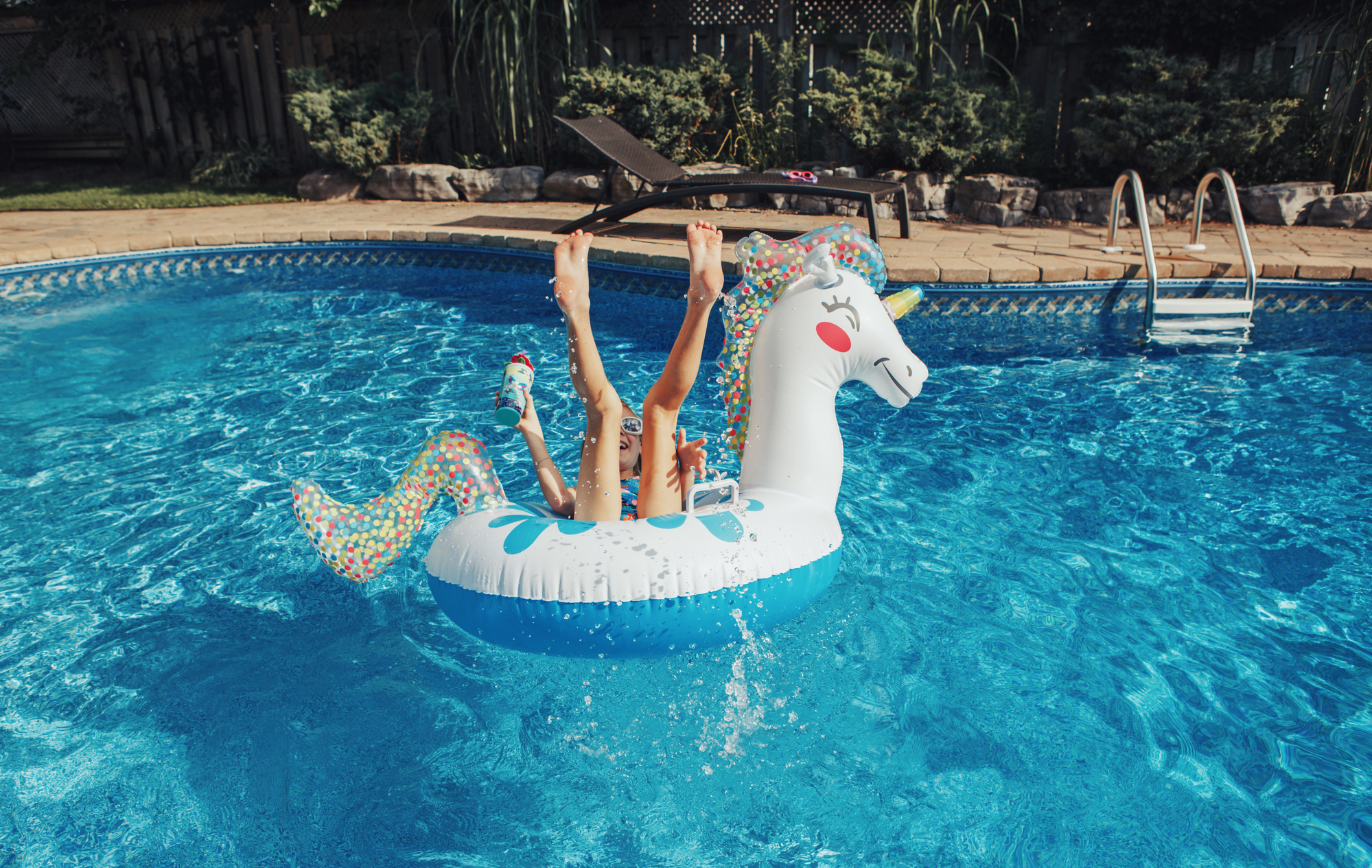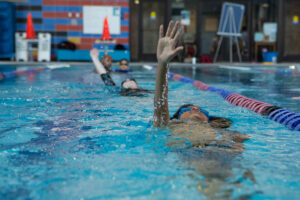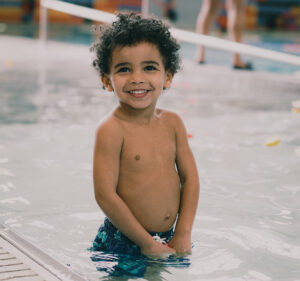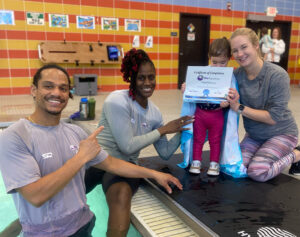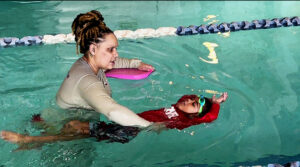The Surprising Ways These Swim Safety Devices Are Not Only Unhelpful but Dangerous
Every time you’ve been to the beach or a public pool, you’ve probably seen little ones running around joyously with water wings firmly around both arms. Floaties are such a common sight, many parents don’t even think to question them. Everyone uses them, so they must be OK, right? But are arm floaties safe? According to swim experts, no! Here are the top seven reasons why not:
1. Arm Floaties Are Designed to Keep You Vertical
These devices intentionally keep children upright. Yes, that keeps their heads above water, but it’s a very unnatural position for real unassisted swimming.
When floating or swimming, you’re often horizontal. Using arm floaties or water wings conditions the children to be vertical instead. That makes the transition to learning how to swim all the harder, but it also makes it less safe.
The fastest way to sink in water is by making your body vertical. Teaching children this position puts them at greater risk when the flotation device is removed.
2. Water Wings Give Children a False Sense of Security
Sure, parents might light up with pride when their kids confidently shout, “Look! I can swim all by myself!” But if children are relying on floaties, water wings, or other flotation devices, they can’t actually swim.
Confidence in the water is great but only if it’s earned and justified. Confidence without the water safety skills to back it up can be dangerous.
Using water wings means children don’t learn the real consequences of what happens when they jump into the water unassisted. They are also less likely to learn important water safety rules, such as only going in the pool when an adult is present.
3. Flotation Devices Give Parents a False Sense of Security
If a child is outfitted with floaties, parents are more likely to let their attention wander. They assume the children are safe because they have these devices on.
When a child is in the water, though, constant adult supervision is essential. It’s one of the critical ways to make your pool more safe for everyone.
4. When the Arm Floaties Are Gone, Children Are Fearful of the Water
Children become reliant on these kinds of flotation devices. When you take them away, they’re often very fearful of the water.
As they learn how to swim, they have to develop their confidence in the water all over again. This can make learning how to swim a harder, longer process. If children feel they’ve regressed, that can be discouraging and hard to overcome.
5. Water Wings Are Not Designed to Be Life-Saving Devices
Water wings and other floaties are toys. They are not put through the rigorous testing or standards of certified, approved flotation devices, such as certain life jackets. The CDC specifically does not recommend using any air-filled swimming aid to replace these kinds of approved personal flotation devices.
Even certified life jackets should only be used in appropriate situations and with continuous adult supervision. When learning how to swim, any flotation device can be unhelpful and can hinder the development of basic swimming skills.
Note: on boats or any other situation where a child might fall into the water, a life jacket should always be worn.
6. Floaties Don’t Accurately Represent How Bodies Respond to Water
With floaties on, young infants or toddlers learn to associate being in the water with effortless flotation. This isn’t how bodies actually react to water. Children also don’t get a good sense of the natural buoyancy water provides.
It all adds up to a poor sense of what it’s really like to learn how to swim. This can make the process of learning to swim take longer.
7. Air-Filled Devices Can Fail
Water wings are cheap and readily available. That’s one of the reasons parents see them at just about every pool. The problem? That cheap, thin plastic can easily pop or deflate. When this happens, it leaves your child helpless and completely unassisted in the water.
Even if the water wings don’t fail outright, they can still shift, slide, or fall off. Any of these scenarios put children at risk.
Couple that with parents’ overconfidence when children are wearing them, and it’s a recipe for potential tragedy.
The Best Way to Ensure Water Safety
The best approach to water safety is through layers of protection. This method puts safety measures on top of safety measures. The aim? To ensure there are as many hurdles to drowning as possible.
Two of those most important layers are constant adult supervision and swim lessons.
Nothing offers better protection in the water than swimming competency. If you’re ready to arm your child with the best water safety defense, sign up today!

